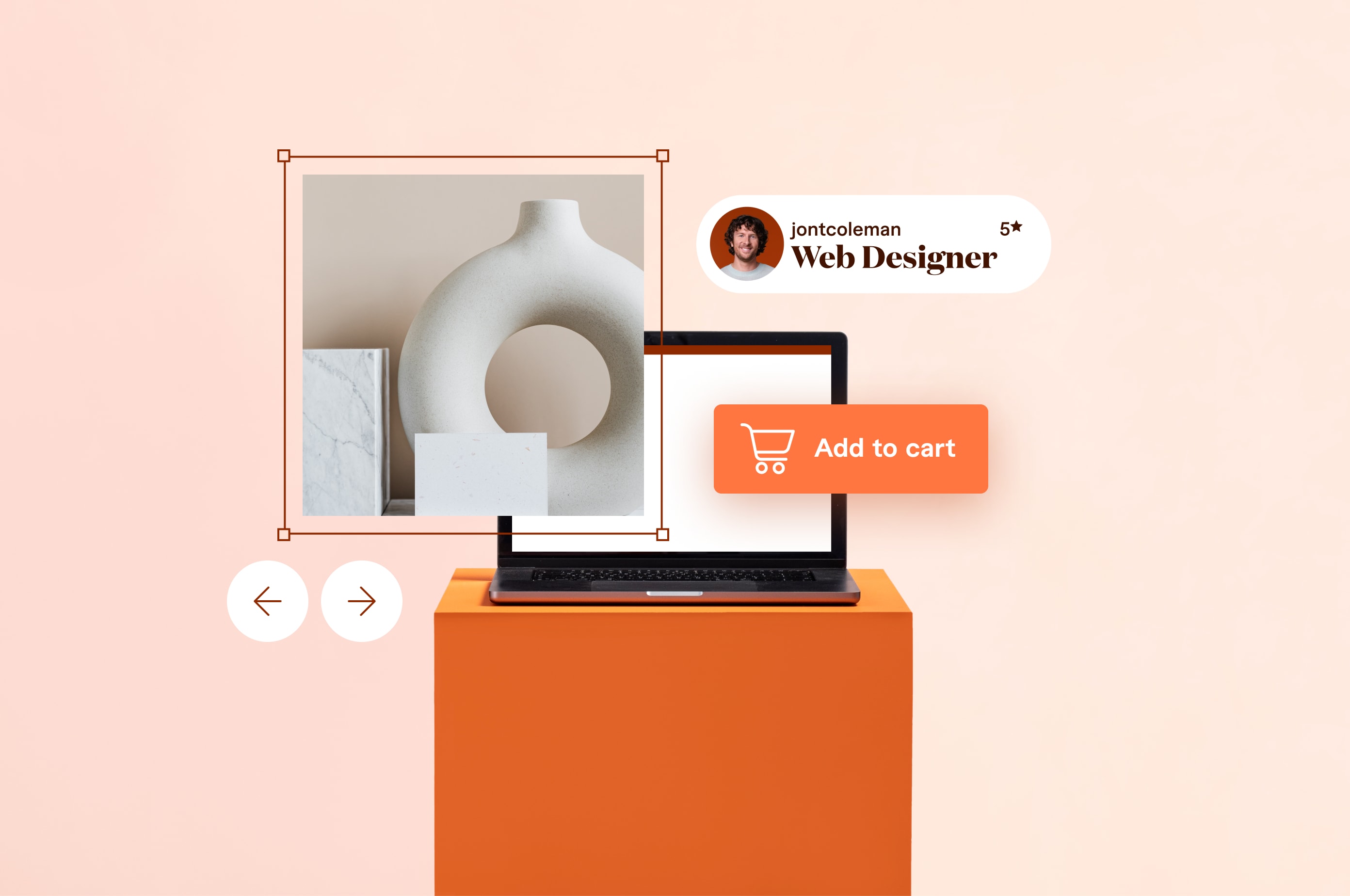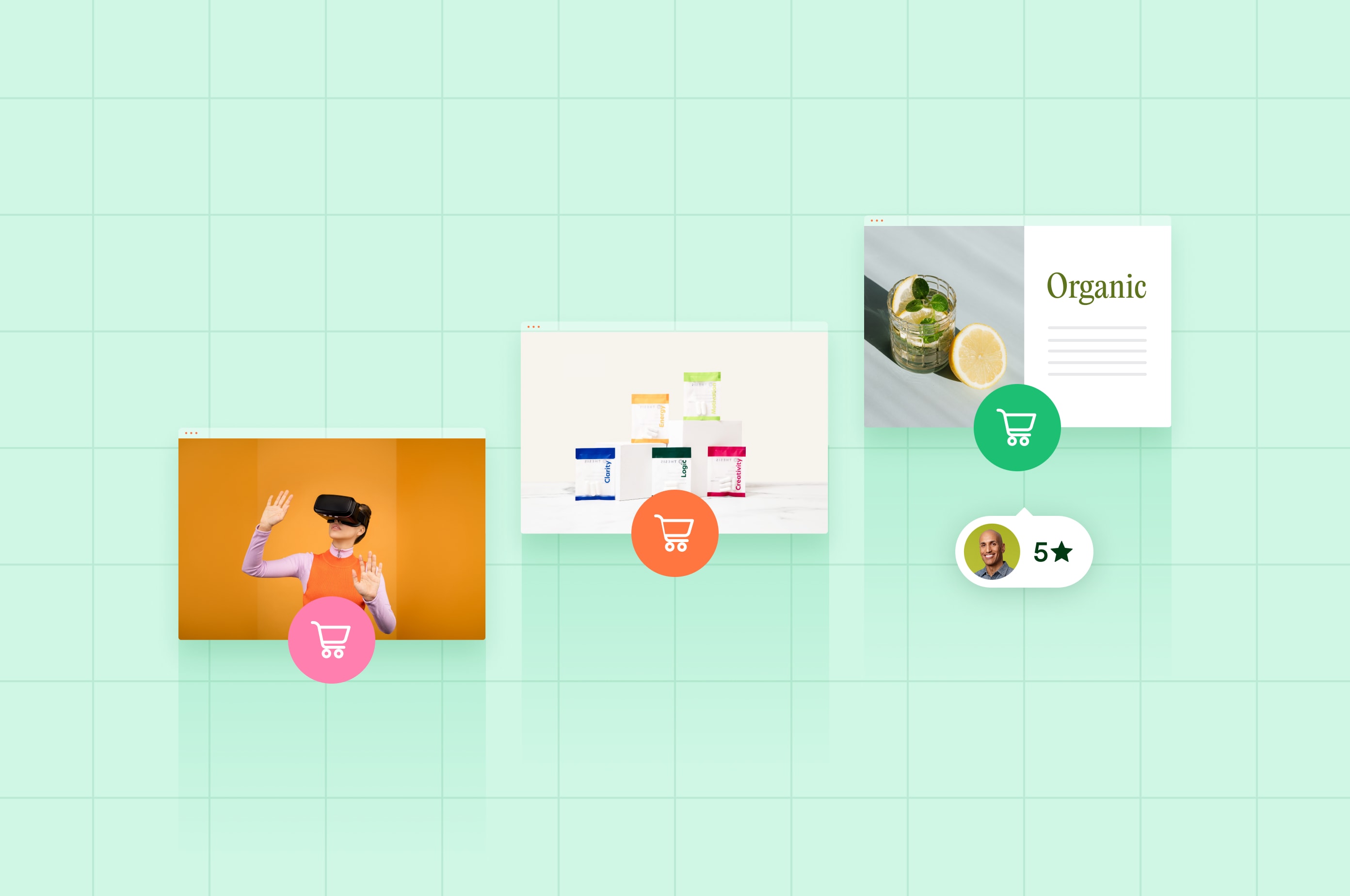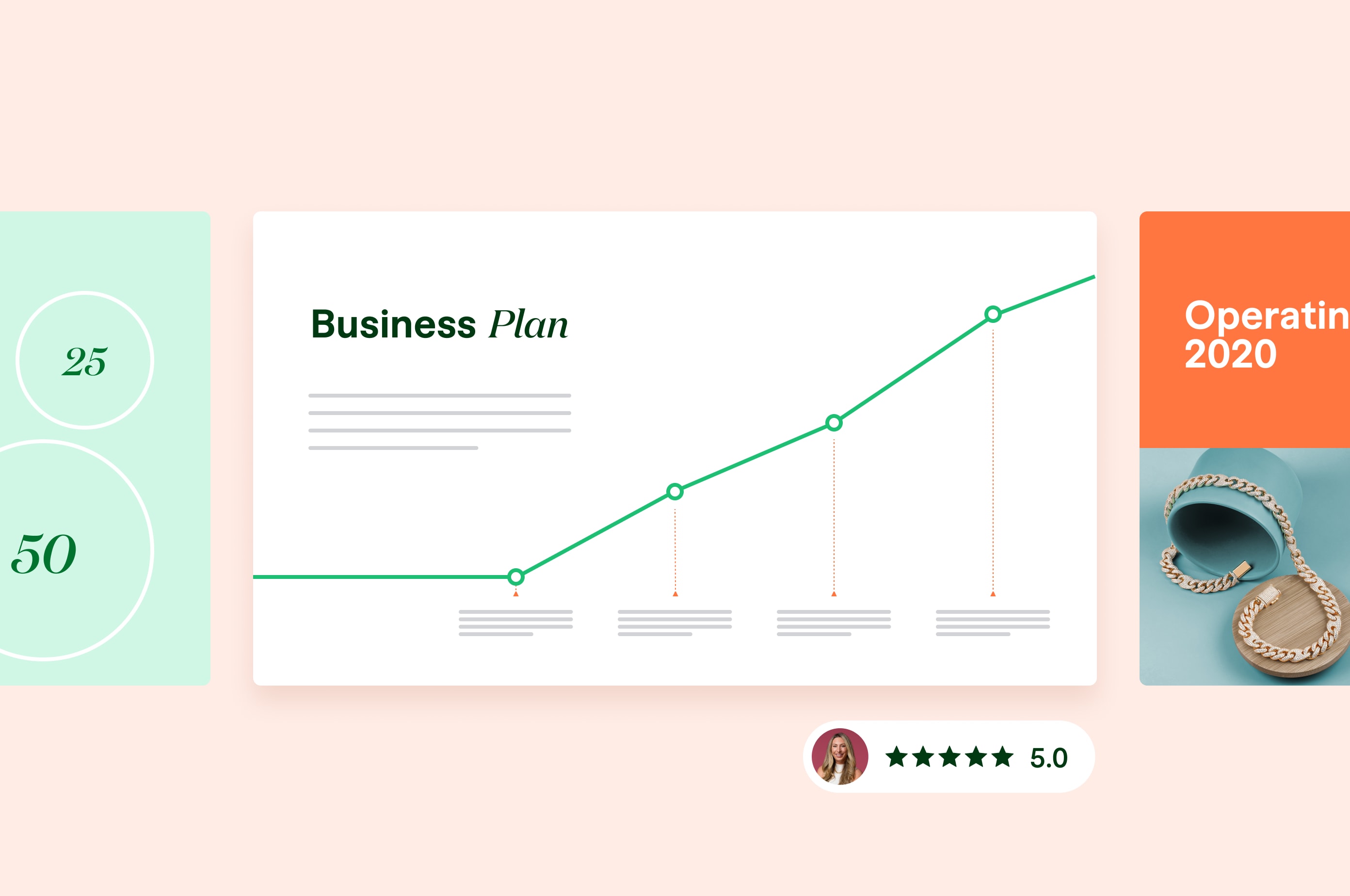What Is Ecommerce? Start and Grow Your Online Business
Learn the essentials of ecommerce and how to build a successful online business.
 May 1, 2025
May 1, 2025 10 minute reading
10 minute reading
Online shopping has shifted from a convenience to a necessity. Whether you're a marketing professional, a freelancer, or an entrepreneur dreaming of launching an online store, understanding ecommerce is crucial.
Businesses of all sizes are establishing their digital presence. But what exactly makes ecommerce tick, and how can you harness its power? This article breaks down everything you’ll need to know about managing an online store —from core concepts to starting your own ecommerce journey.
What is ecommerce?
Ecommerce is the buying and selling of goods and services over the internet. It covers everything from that book you ordered last week to subscription services and digital downloads. Unlike traditional stores where you physically browse aisles, ecommerce connects you with businesses virtually—whether they're around the corner or across the globe.
Ecommerce creates $4.32 trillion in revenue worldwide and only continues to grow. So big and small businesses benefit from ecommerce, allowing them to grow, reach specific customers, and understand shopping behaviors in ways physical stores never could. Whether you run a neighborhood shop looking to go digital, launch an online startup, or offer freelance services, you need to understand ecommerce basics in order for your business to thrive.
Below, we’ll be exploring how to set up your ecommerce store and how to manage your online store to give your ecommerce brand the best chance for success.
How ecommerce works
For ecommerce to work, there is an entire system of processes that must work together to get that t-shirt or mug to your door.
When you browse an online store, you’re using a website that displays products from the store’s database. After you add items to your cart and hit checkout, payment gateways jump into action to process your credit card or digital payment securely.
Behind the scenes, the store's order management system verifies your purchase and checks if your items are in stock. When confirmed, your order zips to warehouse systems where staff or robots pick, pack, and ship your items through delivery partners. Throughout this journey, automated notifications ping your inbox to keep you in the loop.
This whole process relies on software managing inventory, processing payments securely, tracking customer relationships, and coordinating shipping—all working together to transform your digital clicks into physical packages at your doorstep.
The five core components of the ecommerce process include:
ecommerce Platforms: These are the back-end tools that help run an online store, including website hosting, payment processing, inventory management, and marketing automation. Examples include Shopify, WooCommerce, Magento, and BigCommerce.
ecommerce Websites: These are digital storefronts where customers can browse, select, and purchase products or services. They include product listings, search functionality, shopping carts, and secure checkout systems.
Payment Processing: Online stores require payment gateways to handle transactions securely. Platforms like PayPal, Stripe, and Square enable businesses to accept credit cards, digital wallets, and other payment methods.
Order Fulfillment: This is the process of receiving, packing, and shipping orders to customers. Businesses may handle fulfillment in-house, use third-party logistics (3PL) services, or adopt dropshipping, where suppliers ship directly to customers.
Marketing & Customer Acquisition: Businesses drive traffic and sales through SEO, paid ads (Google, Facebook, TikTok), social media, email marketing, and influencer partnerships. Personalization and retargeting help convert visitors into customers.
Types of ecommerce
There are many different types of ecommerce. Each one provides a different relationship between buyers and sellers. Understanding these different models can help you choose which one is the right approach for your products and your target audience.
Business-to-consumer (B2C)
B2C ecommerce is the most common model, where businesses sell products or services directly to individual consumers. Online retailers, brands, and service providers operate through websites or marketplaces to reach customers. Amazon, Nike, and Netflix are all examples of B2C ecommerce.
Pros of B2C ecommerce
Lower Operational Costs: No overhead costs that are necessary for physical retail stores.
Faster Purchase Process: Customers can browse, compare, and buy instantly.
Direct Customer Interaction: Can personalize marketing and get direct customer feedback to build brand loyalty.
Scalability & Flexibility: Easy to add new products, target different demographics, and adapt to market trends and customer preferences.
Multiple Revenue Streams: Can use subscriptions, digital products, affiliate marketing, and cross-selling to increase profits.
Cons of B2C ecommerce
High Competition: You’ll compete with a global marketplace like Amazon, so you’ll need strong marketing and branding to stand out.
Customer Retention Challenges: B2C customers are less loyal than B2B buyers, and the ad expenses cause higher customer acquisition costs (CAC).
Logistics & Fulfillment Complexities: Managing shipping, returns, and delivery can be challenging. Because of B2C marketplaces like Amazon, customers expect fast and free shipping.
Price Sensitivity: Discounts and promotions are often necessary to stay competitive because customers can compare prices across multiple platforms.
Customer Service Demands: You’ll receive a high volume of customer inquiries, complaints, and refund requests, so it’s a good idea to invest in chatbots, support teams, and create clear return policies.
Dependence on Digital Marketing: Your success is heavily dependent on SEO, social media, and paid ads, and algorithm changes on different platforms can impact your traffic and sales.
Find an eCommerce marketing specialist for hire
Business-to-business (B2B)
In B2B ecommerce, companies sell products or services to other businesses. These transactions often involve bulk purchases, long-term contracts, and customized pricing. B2B platforms may serve wholesalers, manufacturers, or service providers. Alibaba, Salesforce, and Office Depot are examples of B2B ecommerce.
Pros of B2B ecommerce
Higher Order Value & Recurring Sales: B2B transactions are usually bulk orders leading to higher revenue per transaction, and many businesses establish long-term contracts, which means consistent sales.
Stronger Customer Loyalty: Businesses tend to form long-term relationships with suppliers because they prioritize reliability and quality.
Lower Marketing Costs Per Customer: Customer retention costs are lower due to long-term contracts, and businesses rely on direct sales, referrals, and industry networking rather than advertising.
Scalability & Global Market Access: Easy to grow with access to companies from all over the world.
Automated Processes & Cost Efficiency: B2B ecommerce platforms integrate with ERP, CRM, and supply chain systems, automating processes and improving efficiency.
Diverse Revenue Models: Can earn through direct sales, wholesale, subscriptions, and licensing models. And can use custom pricing, bulk discounts, and tiered memberships.
Cons of B2B ecommerce
Complex Sales Process: B2B cycles are longer because of contract negotiations, approvals, and bulk order planning. Decision-making involves multiple stakeholders, which makes transactions more complicated than B2C.
High Customer Acquisition Cost (CAC): B2B buyers need more personalized outreach, like product demonstrations and customized pricing, leading to high acquisition costs.
Technical Challenges: Needs integration with business systems like ERP, CRM, and inventory management tools. And things like custom pricing, bulk order functionality, and multi-user accounts add complexity to the platforms.
Limited Buyer Pool: B2B has a niche market, so there’s a limited number of potential buyers.
High Expectations for Customer Support: B2B buyers expect dedicated account managers, quick response times, and reliable after-sales support, so businesses need to invest in 24/7 service and tailored support solutions.
Regulatory & Compliance Requirements: B2B transactions usually involve legal contracts, compliance with industry regulations, international trade laws, navigating tax policies, import/export restrictions, and corporate procurement policies.
Consumer-to-consumer (C2C)
C2C ecommerce enables individuals to sell products or services to other individuals through digital platforms. These marketplaces facilitate transactions but usually charge a commission or listing fee. eBay, Facebook Marketplace, and OfferUp are examples of C2C ecommerce.
Pros of C2C ecommerce
Low Barrier to Entry: Minimal investments needed to sell on platforms like eBay and Facebook Marketplace, and there’s no need to develop an ecommerce website or manage inventory at scale.
Lower Operational Costs: No need for warehousing, manufacturing, or other retail expenses.
Sustainability & Unique Products: Encourages second-hand sales, reduces waste, and promotes eco-friendly shopping.
Flexible Business Model: You can operate part-time or full-time based on demand.
Community-Driven Growth: Buyers often trust sellers with high ratings and good reviews, which organically boosts credibility.
Cons of C2C ecommerce
Lack of Quality Control: There’s no standardized quality assurance, so scams, counterfeit goods, and misleading product descriptions can erode customer trust.
Payment & Fraud Risks: Buyers and sellers face potential scams, chargebacks, and fraudulent transactions.
Unstable Revenue for Sellers: No guaranteed customer base or long-term contracts, and earnings can be inconsistent.
Platform Fees: Selling platforms charge listing fees, transaction fees, and commission, which can eat into your profits.
Logistics & Customer Service Challenges: You need to manage shipping, returns, and customer inquiries on your own. And with no centralized customer service team, customer concerns can slip through the cracks, resulting in negative reviews.
Limited Scalability: C2C businesses rely on individual sellers, so growing into a large-scale enterprise is difficult.
These are the most common types of ecommerce, but others exist too. For example, in Consumer-to-Business (C2B) models, individuals sell services to businesses, like freelancers offering work on platforms such as Upwork. In Direct-to-Consumer (DTC) models, brands bypass retailers and sell straight to their customers. The ecommerce landscape continues to evolve, with hybrid models and innovative approaches emerging in the digital marketplace.
Find an eCommerce management specialist for hire
Steps to start an ecommerce business
Launching an online store needs careful planning and strategic decision-making. From selecting the right business idea to establishing efficient operations, each step builds the foundation for the success of your ecommerce business. With these straightforward steps, you can transform your business idea into a working online store.
1. Choose a business idea
Start by figuring out what products or services align with your interests, expertise, and market opportunities. Then decide whether you want to sell physical products, digital goods, or services that can be delivered online. The right business idea should spark your passion while also having potential for profitability in the digital marketplace.
2. Make sure there's market demand
Conduct thorough market and product research so you can make sure that customers actually want what you plan to sell. Use tools like Google Trends, keyword research, and competitor analysis to gauge interest levels and identify potential gaps in the market. Speaking directly with potential customers through surveys or interviews can provide insights into real needs and pain points your business could address.
3. Decide how you'll ship products to customers
Decide whether you’re going to handle shipping in-house or use third-party fulfillment services. Make sure to consider your products' size, weight, and storage requirements. When creating your logistics strategy, think about shipping costs, delivery timeframes, and packaging needs. International shipping introduces additional complexities, including customs regulations, duties, and longer delivery times that must be factored into your planning.
4. Find suppliers or manufacturers
Research and connect with reliable suppliers or manufacturers who can provide quality products at competitive prices. Build relationships by requesting samples, negotiating terms, and establishing clear communication channels for ongoing orders. When making your final selection, consider factors like minimum order quantities, production lead times, and supplier location.
5. Choose your sales channels
Decide whether you'll sell exclusively through your own website or expand to marketplaces like Amazon, eBay, or social media platforms. Each channel offers different advantages in terms of reach, control, and cost structure that should align with your business goals. A multichannel approach can increase visibility, but also requires more resources to manage effectively.
6. Create an ecommerce website
Develop a user-friendly website that showcases your products and makes the purchasing process seamless. Look into website builders specializing in creating ecommerce websites like Shopify, a user-friendly all-in-one solution offering intuitive store creation tools, secure payment processing, and extensive app integrations. Other platform options include WooCommerce (ideal for WordPress users seeking customization), BigCommerce (known for robust built-in features), and Squarespace (excellent for visually appealing, simpler stores)—each with different pricing structures, scalability potential, and learning curves.
Find an eCommerce developer for hire
7. Create a fulfillment plan
Establish clear procedures for processing orders, picking products, packing boxes, and shipping items to customers. Decide whether you'll handle fulfillment in-house or partner with third-party logistics providers as your business grows. Document your return policy and procedures to ensure you can provide consistent customer service when issues arise.
8. Market your ecommerce business
Develop a comprehensive marketing strategy incorporating SEO, content marketing, email campaigns, and social media to attract and retain customers. Invest in high-quality product photography, compelling descriptions, and strategic pricing to convert visitors into buyers. Track your marketing efforts through analytics to determine which channels deliver the best return on investment and adjust your strategy accordingly.
Ecommerce trends
Ecommerce is constantly evolving. From how customers find products to what makes them actually buy from your store, you need to know what’s trending and think ahead to capture your target audience.
Social Commerce
Social media platforms like Instagram, Facebook, TikTok, and Pinterest aren't just for scrolling anymore—they've become virtual malls. In fact, Statista reports global revenues generated through social media platforms reached nearly $700 billion. Brands are getting creative by teaming up with influencers, showcasing real customers using their products, and hosting live shopping events that feel like you're shopping with friends.
It’s also easy for customers to ask questions about products directly through comments or messages, and check out what other shoppers think before buying. With cool features like AR try-ons (try before you buy!), one-click purchasing, and videos that let you shop as you watch, social media has turned shopping into something fun and social.
Sustainability
Today, shoppers aren't just looking at prices—they're checking if brands are helping the planet. In fact, GWI reports that 58% of consumers say they’re willing to pay more for eco-friendly products. So, smart online stores are switching to eco-friendly packaging, finding smarter ways to ship products that burn less fuel, and highlighting products made from materials that don't harm the planet.
Brands that openly share what they're doing for the environment—where their products come from, how they're made, and their progress on green goals—are winning customer loyalty. And secondhand marketplaces, rental options, ethical disposal programs, and recycling programs have become more popular.
Personalization and AI
Artificial Intelligence systems are offering great personalized shopping experiences for your customers. They’re able to track what customers browse, what they buy, and how they shop to suggest products to your customers that they’ll love. It can also show search results that matter to them, and deals on stuff they want, which means they’re way more likely to hit the "buy" button. There are also AI chatbots and virtual assistants that are ready 24/7 to answer customer questions, offer suggestions, and solve issues without making them wait for a human to respond.
Behind all this, AI is working its magic by adjusting prices on the fly, predicting what items will sell out, and catching suspicious transactions before they happen. Shopping also gets even easier when your customers can search by snapping a picture of something they like or just telling their smart speaker what to order.
Start your ecommerce business with professional help
Building a successful ecommerce business requires diverse skills that Fiverr's marketplace of freelancers can provide. Rather than struggling to master everything yourself, connect with experts who can transform your vision into reality.
Fiverr offers professionals for every aspect of your ecommerce journey—graphic designers for compelling branding, developers to build custom Shopify or WooCommerce stores, and product photographers to showcase your merchandise effectively. Ecommerce SEO experts can optimize your visibility as you grow while digital marketers drive targeted traffic to your store.
The platform's review system helps you identify proven talent with ecommerce expertise, allowing you to leverage specialized skills exactly when needed without hiring full-time employees or agencies.
Ecommerce FAQs
What is ecommerce in simple terms?
Ecommerce is buying and selling products or services online instead of in traditional brick-and-mortar stores. Business owners and entrepreneurs use websites, mobile apps, and online marketplaces to conduct electronic commerce transactions. This form of retail ecommerce boomed during the pandemic as customers shifted to online shopping via smartphones and other mobile devices for a convenient real-time experience.
What are the three types of e-commerce?
The three main types of ecommerce business models are B2B (business-to-business), B2C (business-to-consumer), and C2C (consumer-to-consumer). Each offers unique benefits of ecommerce and drives online sales differently. B2B focuses on business transactions between companies, and B2C involves retail sales directly to customers (improving customer experience with product recommendations). At the same time, C2C enables person-to-person online purchases through platforms that facilitate m-commerce and social media marketing.
How to start an ecommerce business with no money?
Start by dropshipping, where you sell products without inventory costs. Use free website builders like Wix or WordPress with WooCommerce. Market through free social media platforms and content marketing. Offer pre-orders to generate initial capital. Leverage marketplaces like Etsy with minimal listing fees. Begin with digital products requiring zero production costs.
Is Amazon an ecommerce store?
Yes, Amazon is the world's largest ecommerce platform. It started as an online bookstore but evolved into a massive digital marketplace where businesses and individuals can sell virtually any product. Amazon exemplifies ecommerce by facilitating online buying and selling without physical store interactions.






